Alcohol Drinking Declines and Sobriety Spreads as Consumers Slash Discretionary Spending
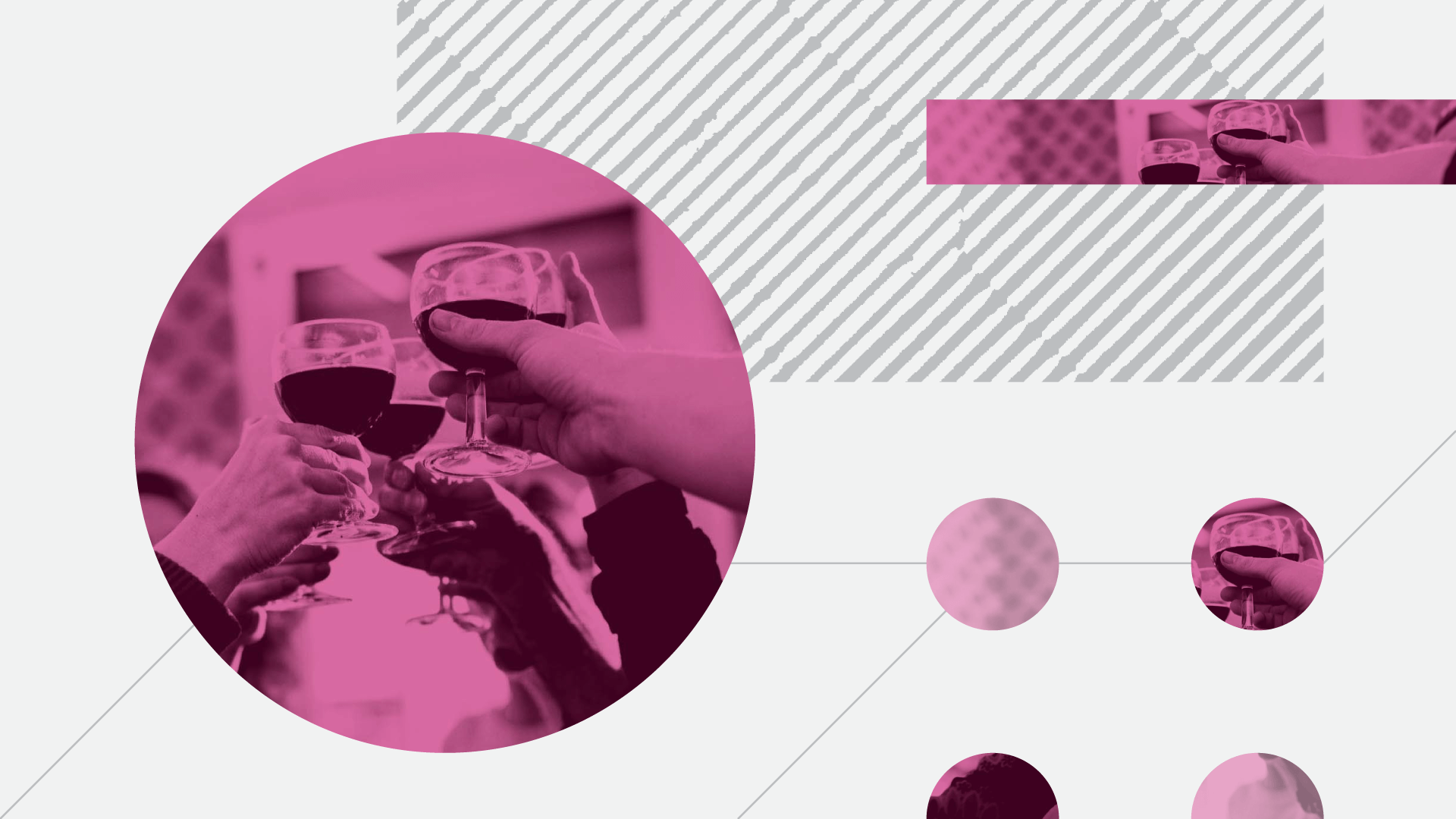
The key demographics that typically spend the most on alcohol have cut their budgets across adult beverage categories, with some saying they no longer drink alcohol at all. Continued economic pressures, combined with consumers' health and wellness-driven behavior changes, suggest adult beverage brands should not expect this trend to reverse anytime soon.
The adult beverage industry appears to be in a precarious position as consumers cut spending overall and show signs of shifting discretionary purchases from goods back to services.
Overall, consumers’ reported spending on alcohol was down 15% month over month in March as elevated expenses for necessities like groceries and gas precipitated declines in nonessential purchases.
This pullback in spending, which has been more pronounced for physical products such as alcohol than it has for services, hints at the changing role of alcohol in consumers’ lives. More than two years into the pandemic, consumers' social habits are still in flux. And while personal finances are the driving force of the cutbacks, consumers who are looking to curb their drinking habits for health and wellness reasons may see cutting spending in this category as a win-win.
Consumer expenditures dropped across all adult beverage categories in March amid broader discretionary spending cuts
Consumers aren’t slashing spending on alcohol because it’s become more expensive: While the consumer price index for food at home was up 10% annually in March, alcohol’s price index only increased by 3.7% during that time.
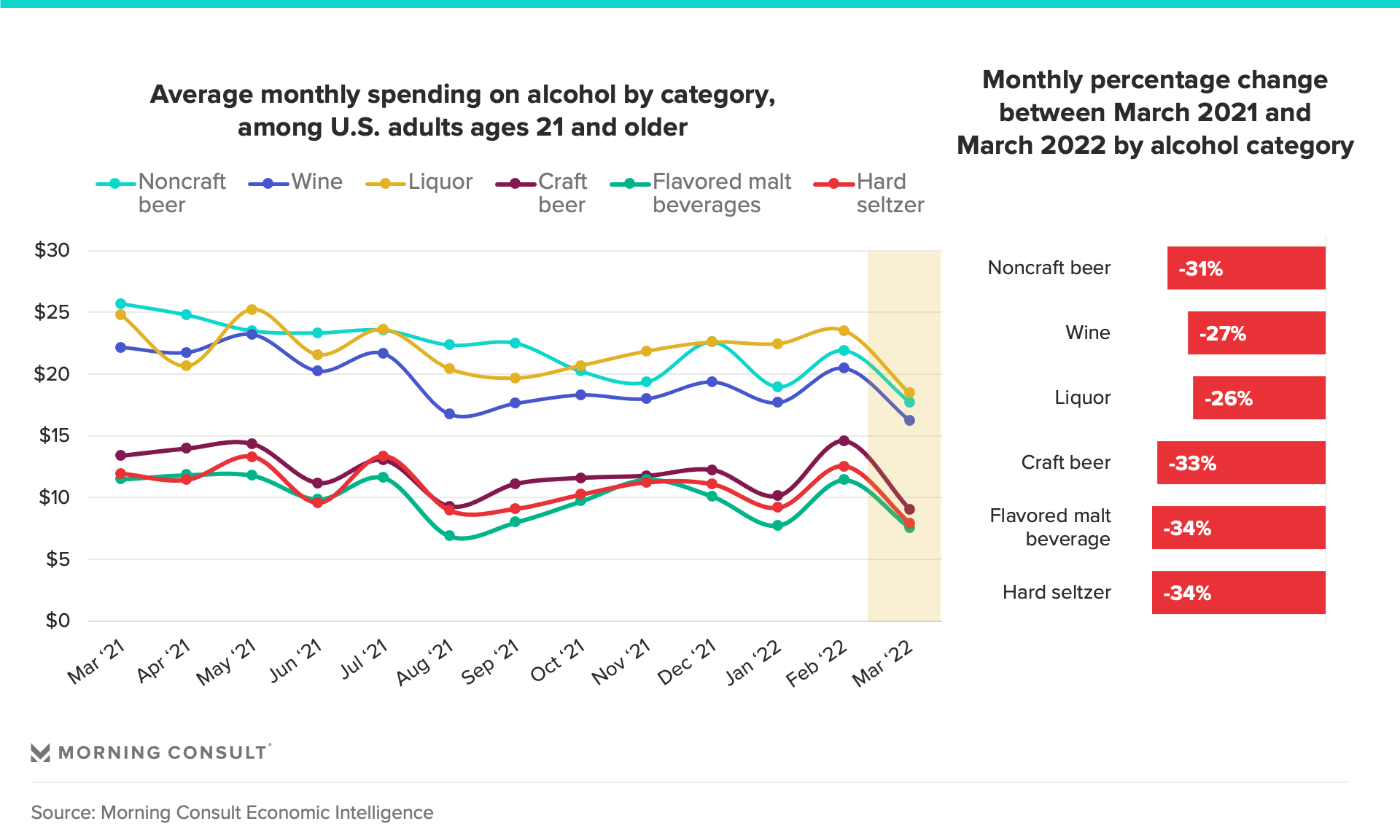
These declines in spending are driven by less consumption both at home and on premises. Even as consumers registered the highest comfort levels with going to a restaurant or bar since Morning Consult started tracking in 2020, average monthly visits to a bar dipped in March compared with both the previous month and March 2021.
Alcohol is not a consumer necessity — though it might have felt that way during the early, anxiety-ridden days of the pandemic. With inflation hanging over the heads of millions of Americans, cutting back on alcohol spending means more room for more essential items: food, housing and utilities. Seasonality could also play a role here: While the holiday season from October to December is marked with social occasions and food and drink consumption, drinking occasions often dip in January and February as consumers' social calendars clear and they reset their annual health and wellness goals.
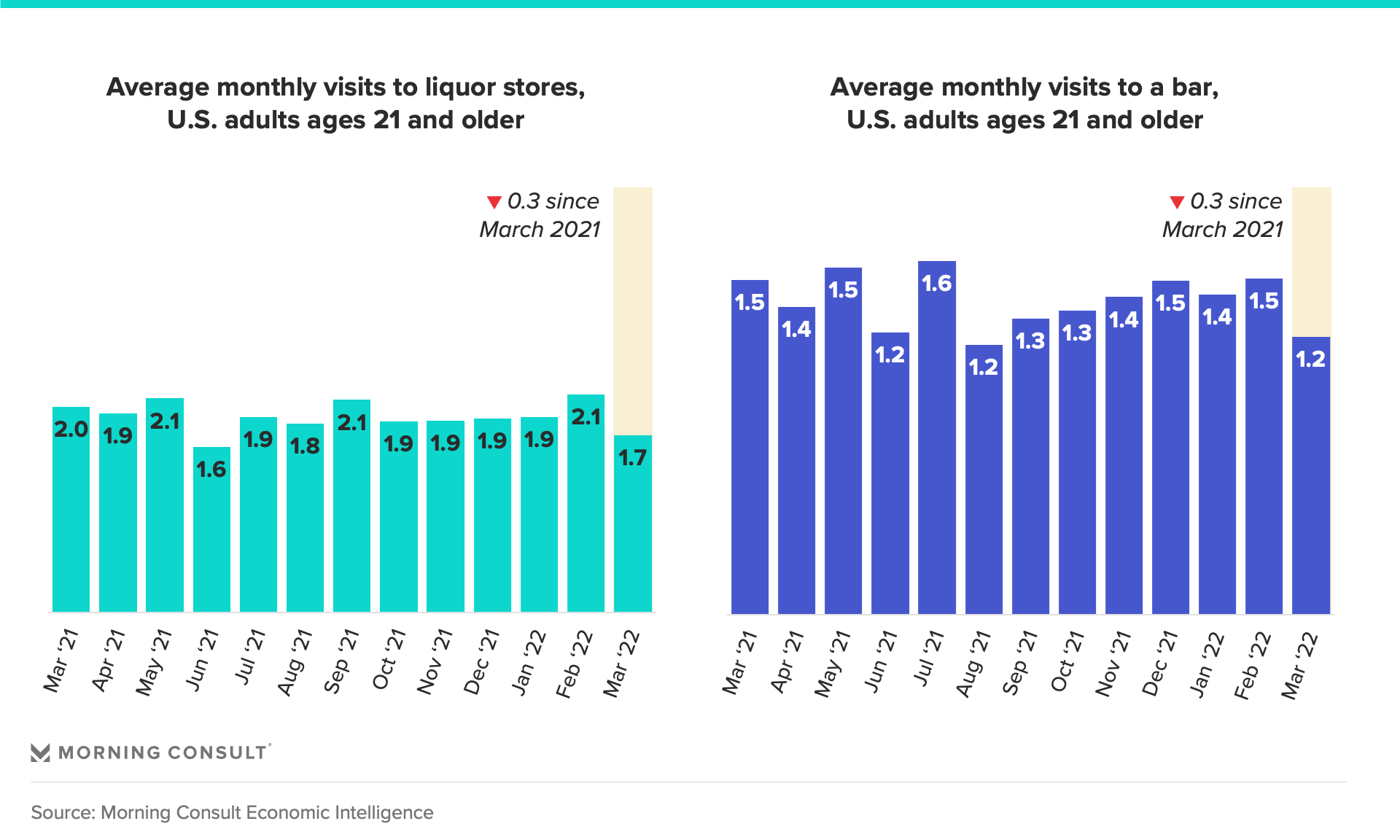
The share of consumers drinking beer, wine and liquor at least weekly is declining
That means fewer beers, martinis and lambruscos — these decreases are being felt across all categories. The share of those who said they drank at least once a week declined across noncraft beer, wine and liquor categories between October 2021 and March 2022. Declines in weekly drinking during that time were steepest in beer – dropping 6 percentage points from 25% to 19%.
Stepping back, the share of those who drink beer and liquor at least once a week has declined, while the share of weekly wine drinking may be returning to pre-pandemic levels.
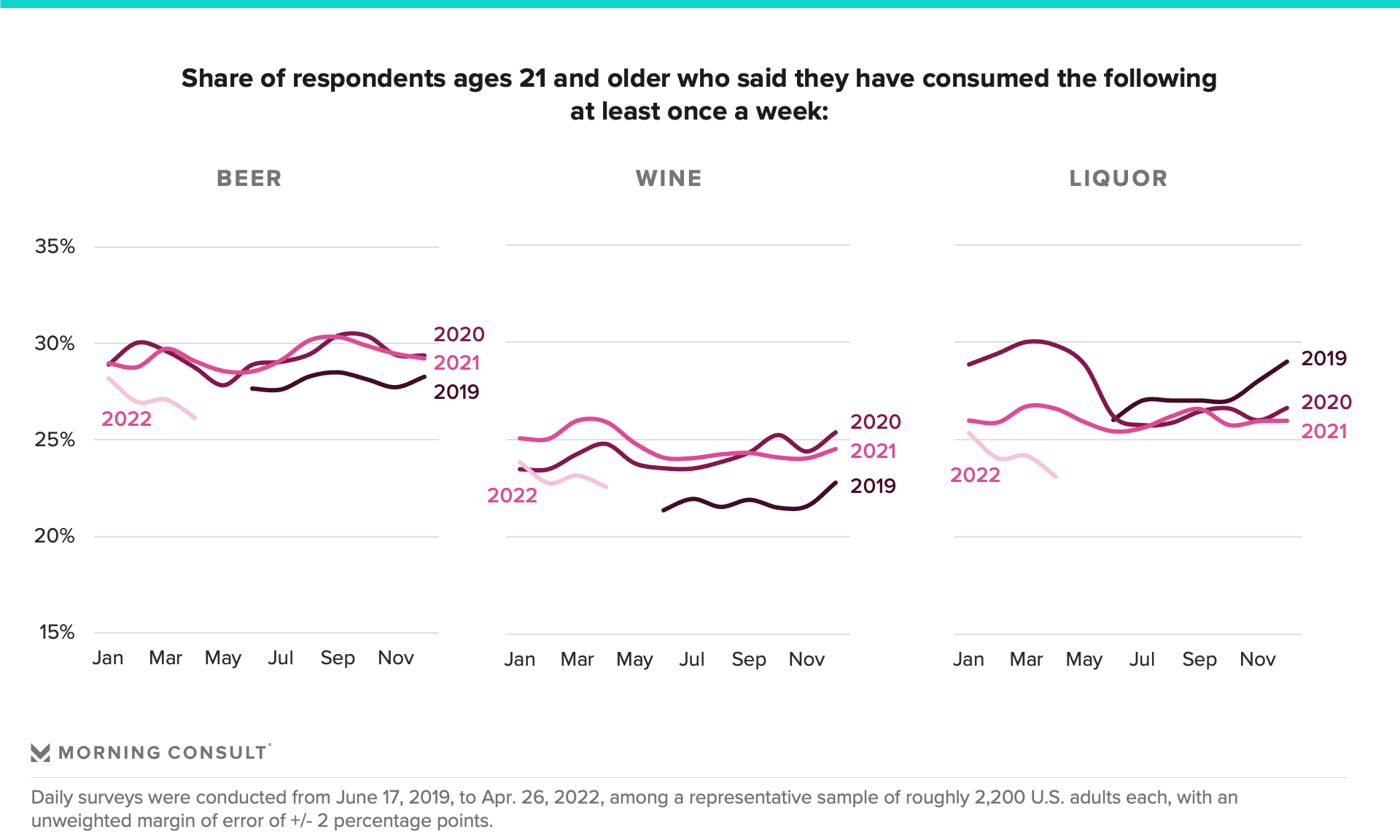
Prior to the pandemic, liquor was experiencing growth in weekly consumption frequency in 2019 and early 2020. When COVID-19 hit, reported consumption plummeted and has yet to recover. In early 2022, the share of those drinking liquor at least weekly declined again amid spending cuts.
Drops in alcohol spending are steepest among millennials and high-income consumers
The alcohol industry’s two key demographics — millennials and high-income consumers — are cutting their alcohol spending the most, especially between February and March.
But what’s potentially more concerning for adult beverage brands is that the share of consumers who say they drink alcohol at all has declined among these same groups.
The decrease in spending on alcohol among millennials is underscored by an 8-point drop in the share who said they drink alcohol between October 2021 and March 2022. Similarly, consumers with an annual household income of $100,000 or more are now 10 points less likely to say they drink alcohol than they were last fall.
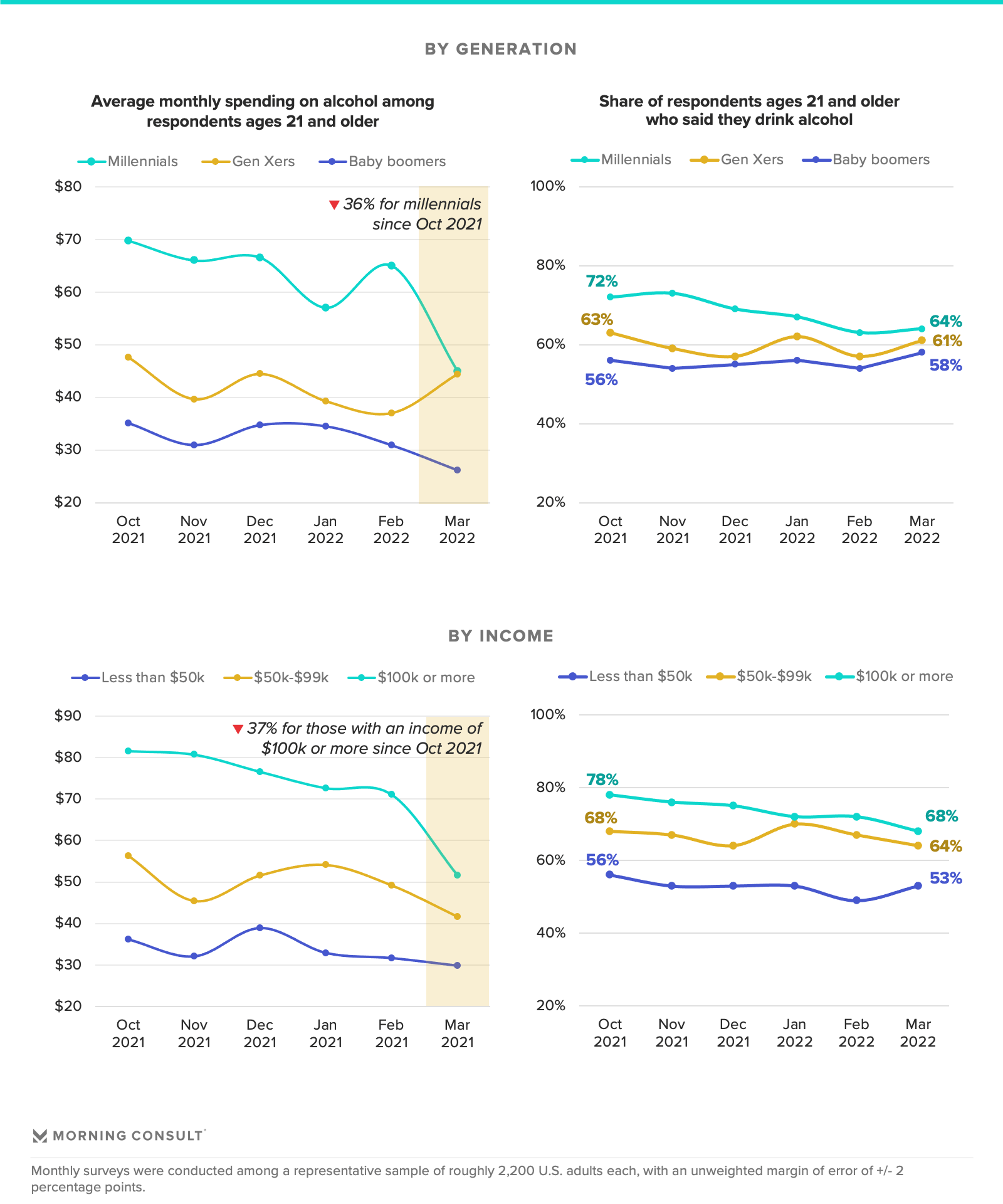
It’s one thing to cut back on drinking, but it’s an entirely different story to stop identifying as someone who drinks. As consumers fold more of their typical activities back into their routines, from traveling to in-office work, they may find themselves re-evaluating some of their pandemic-era habits like alcohol consumption. More than 1 in 4 millennials said they planned to participate in Dry January in 2022, an exercise in (near) abstinence for the month, with health the most cited reason for participating. It is likely that the prospect of securing both a healthy budget and a healthy body by cutting down on consumption is appealing to consumers.
Emily Moquin previously worked at Morning Consult as a lead food & beverage analyst.